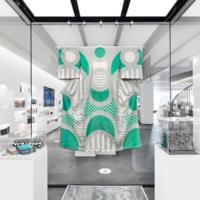Mayan civilization flourished and faded more than a millennium ago, and the mystery of its decline has fascinated archaeologists ever since. Although experts debate whether it was a Toltec invasion or the effects of drought that spelled the end of the Maya, all agree that it was the dense jungle that preserved their cultural legacy for posterity.
The Mayan world that, circa 250-900, spread from the Yucatan Peninsula of southern Mexico to the tropical lowlands of Honduras, Guatemala and Belize was ultimately reclaimed by the jungle. Hidden from the zealous Spanish conquistadors, the monuments of this brilliant Mesoamerican culture survived untouched. Over the last century, innumerable Mayan records have been unearthed, giving the modern world an opportunity to marvel at this people's achievements. Now showing at the National Science Museum in Ueno Park is a display of artifacts reflecting current Mayan research conducted by the National Museum of Archaeology and Ethnology in Guatemala and the Honduran Institute of Anthropology and History.
Research conducted by those two institutes focused on the dynastic legacy of the southern Mayan metropolis of Copan. These ruins are located in western Honduras some 60 km from the Guatemalan border. Though not as well-known as Tikal in Guatemala, with its famous temple-pyramid structures, Copan is a valuable archaeological site for the sheer number of sculptures that have been discovered there. It boasts the largest find of commemorative stone-slab carvings, many elaborate stone and stucco sculptures and, in the "Hieroglyphic Stairway," the longest glyphic text in the Mayan realm.


















With your current subscription plan you can comment on stories. However, before writing your first comment, please create a display name in the Profile section of your subscriber account page.